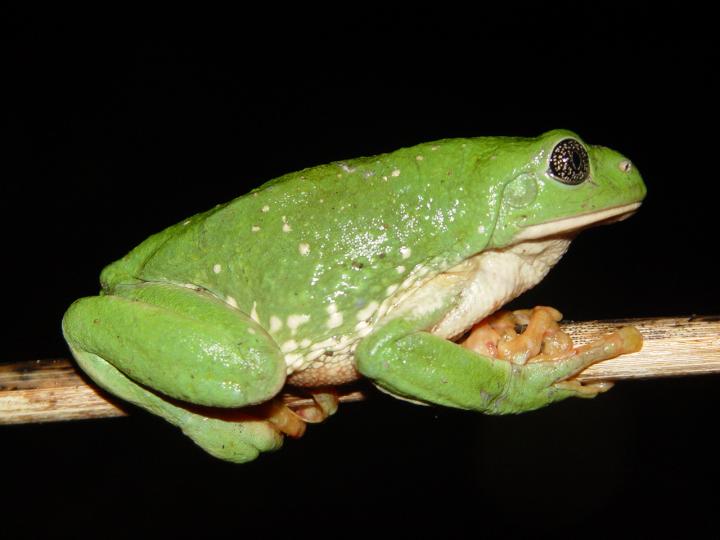A new study reveals that plants and animals are remarkably similar in their responses to changing environmental conditions.

Credit: John J. Wiens
Despite fundamental differences in their biology, plants and animals are surprisingly similar in how they have evolved in response to climate around the world, according to a new study published this week in Nature Ecology and Evolution.
Plants and animals are fundamentally different in many ways, but one of the most obvious is in how they deal with temperature.
“When it gets sunny and hot where they are at a given moment, most animals can simply move to find some shade and cool down,” said lead study author John J. Wiens, a professor of ecology and evolutionary biology at the University of Arizona. “Plants on the other hand, have to stay where they are and tolerate these higher temperatures.”
Together with Hui Liu and Quing Ye from the South China Botanical Garden, Wiens analyzed climatic data from 952 plant species and 1,135 vertebrate species. They included many major groups of flowering plants, from oaks to orchids to grasses, and all major groups of terrestrial vertebrates including frogs, salamanders, lizards, snakes, turtles, crocodilians, birds and mammals.
The team used climatic data and detailed evolutionary trees to test 10 hypotheses about the temperature and precipitation conditions where each species occurs and how these change over time among species. This set of conditions is also known as the “climatic niche” of each species.
The climatic niche of a species reflects where it can live, Wiens explained – for example, in the tropics versus the temperate zone, or at sea level versus the top of a mountain – and how it will respond to climate change.
A species with a wide climatic niche can range widely across many different conditions and may be especially resilient to climate change. A species with a narrow niche, on the other hand, may have a small distribution and may be especially vulnerable to climate change. Understanding climatic niches is critically important for answering many of the most fundamental and urgent questions in ecology and evolution.
For all 10 hypotheses the authors tested, they found that plants and animals showed similar patterns of niche evolution. For example, on average, each plant and animal species lives across a similar breadth of environmental conditions. The breadth of conditions that each species lives in also changes in the same way across the globe in both groups, with plant and animal species in tropical regions found in only a narrow range of temperatures and those in temperate zones tolerating a broad range of temperatures. Furthermore, climatic niches of plants and animals change at similar rates over time.
These results can help explain many fundamental patterns in nature. For example, different sets of plant and animal species tend to occur at different elevations, which differ in temperature and precipitation. In the southwestern United States, for example, different elevations are home to different sets of plant and animal species, from low-lying deserts to grasslands to oak woodlands to pine forests to spruce-fir forests at the higher elevations.
“Since each plant and animal species tolerates a similar, limited breadth of climatic conditions – on average – you end up with different sets of both plant and animal species at different elevations along a mountain slope,” Wiens explained.
These findings may also help explain why different sets of species occur in temperate regions and tropical regions in both groups, and why plants and animals tend to have biodiversity hotspots and high species numbers in the same places – for example, the Andes mountains of South America.
The study also suggests how future climate change may impact plant and animal species.
“The finding that plants and animals have similar niche breadths and rates may help explain why local extinctions from climate change have occurred at similar frequencies in plants and animals so far, and why similar levels of species extinction are predicted for both groups in the future,” said Wiens. “Species with broader niches and faster rates may be better able to survive climate change over the next 50 years, and niche breadths and rates are very similar between plants and animals overall.”
Furthermore, the finding that species are adapted to a narrower range of temperatures in the tropics helps explain why a higher frequency of extinctions is predicted there than in the temperate zone, even though warming may be similar or even greater at higher latitudes.
The authors also found that in both plants and animals, species seem to have more difficulty adapting rapidly to hotter temperatures and drier conditions than to cooler and wetter conditions. Therefore, both plants and animals may have a particularly difficult time adapting to increasing temperatures and droughts related to global warming.
###
Media Contact
Daniel Stolte
[email protected]
520-626-4402
Related Journal Article
http://dx.




